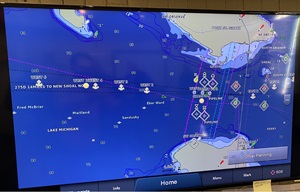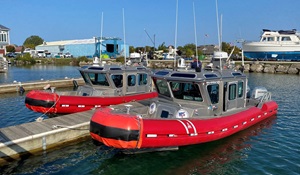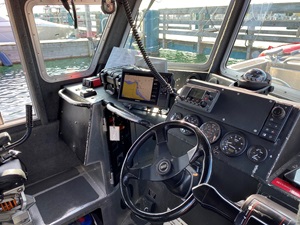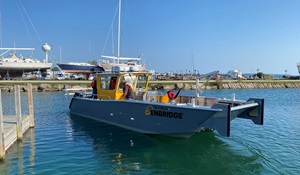Energizing Michigan since 1953.
Straits of Mackinac maritime operations center now fully operational
Enbridge’s suite of marine traffic safety systems further protects Michigan waters
In the Straits of Mackinac, Enbridge is watching the water 24/7.
This past summer, the Enbridge Straits Maritime Operations Center (ESMOC) became fully operational. Staffed around the clock, the ESMOC acts as the nerve center for a suite of marine traffic safety systems put in place by Enbridge in the Straits, as work progresses on the company’s Great Lakes Tunnel Project.
Through ESMOC activities and the $500-million Great Lakes Tunnel, which will be bored deep under the lakebed, Enbridge is protecting Michigan’s waters—while continuing to deliver an uninterrupted supply of reliable, affordable energy that Michigan needs.
“Michiganders rely on us to provide transportation fuel and propane through Line 5,” says Mike Moeller, director of Enbridge’s Great Lakes region. “The ESMOC is another measure to help ensure the safety and protection of the Straits of Mackinac as we move ahead with the Great Lakes Tunnel Project.”
Adds Bob Lehto, Enbridge’s operations manager for the northern Michigan area: “It’s unprecedented for a company like Enbridge to have a (marine) system like this in place to protect our assets. It’s analogous to what government agencies do at ports and waterways throughout the world.”
The ESMOC is staffed by a team that monitors and coordinates multiple Enbridge safety measures designed to prevent an anchor strike on Line 5’s dual pipelines, which are anchored to the lakebed. These measures include:
- Patrol boats on the water 24/7, weather permitting, directly over the Line 5 Straits crossing, and additional patrol boats monitoring other vessels passing through the Straits to perform visual inspections of anchor positions.
- The Guardian Protect system, which identifies approaching vessels at the Straits and issues a safety notification of the “no anchor zone.”
- Radio contact to vessels to confirm anchor position, as needed.
- Six high-definition cameras currently being installed at both ends of the Straits.
- Weather monitoring tools for tracking wind speed and wave heights in the Straits.
If any potential risk posed by a passing vessel can’t be resolved by ESMOC staff using the measures above, ESMOC can immediately contact the U.S. Coast Guard or local authorities, and can order the immediate shutdown of the dual Line 5 pipelines.
Image gallery: Enbridge Straits Marine Operations Center
“It’s a personal charge to a lot of us,” says Lehto, “who take this very seriously—protection, safety and reliability of operations here in the Straits of Mackinac.”
Ultimately, the Great Lakes Tunnel—to be bored through rock deep below the lakebed, housing a new segment of Line 5 pipe—will virtually eliminate the chance of a pipeline incident in the Straits.
A $500-million private investment in Michigan, the Great Lakes Tunnel will be built by Michigan labor, and harness the knowledge and experience of industry-leading tunnel engineers.
Enbridge is committed to pursuing the Great Lakes Tunnel. The company continues to devote significant resources to the project in preparation for submitting appropriate permit applications. The tunnel project could be under construction by 2021.
You may also like
The Great Lakes Tunnel, a significant private investment by Enbridge in Michigan, will be built under the Straits of Mackinac to house Line 5.
We take special precautions to protect the Great Lakes.
About 90 tanker trucks per hour would need to travel Michigan roads to move the products that Line 5 transports each day.













